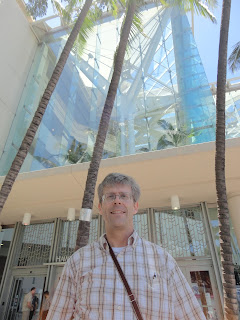I feel bad to
miss everyone's talks and posters at the IAU conference because I had
to stand outside the door for two weeks, but I thank everyone who
came to see my presentation on the double peaks and a new gap in the
periods of planets that depend so much on iron abundance. I have come
every day for two weeks to join in a conference with my colleagues,
only to be kept out because being completely unemployed I don't even
have my own money to pay for the registration fee.
The bigger
issue is that science community must develop procedures collaborating
groups to bring back into the group someone who has been randomly
kept out by their organization. I have been kept “out the door”
not just from one observatory but also from the larger collaborations
such as Kepler that I had worked so hard to prepare LCOGT to join.
Groups must not tolerate having authors keeping out someone because
their organization lacks internal protections. I published my request
for groups to “Go around the observatory”
(http://arxiv.org/pdf/1309.3283.pdf). Paper authors should either
find an alternative way to bring in someone being ostracized by
another author or require that author to not ostracize any important
contributors. Papers must not be considered to have undergone peer
review if someone with a significant part has been kept out. Ethics
statements that say all those who have contributed “intellectually”
must be amended to disallow using not talking to or sharing data with
a target of ostracism to contrive claims that an unwanted person has
not contributed “intellectually.” I challenge the credibility of
papers where author participation has been contrived to keep me from
continuing my contributions.
I have been
literally outside the door from writing papers just as much as I have
been kept standing outside the door of the IAU conference with no
way, not even using my own salary, to pay the registration fee. This
has been because of being kept out of doing the science I planned for
our LCOGT group to do.
By standing
outside, I have demonstrated the importance of requiring procedures
that protect inclusivity. I am showing the importance of being able
to question keeping people out, and my disappointment at being
pressured to cover up and not challenge the authority of those who
stopped me from finishing LCOGT photometry.
I participated
the best I could in the IAU conference just as I have tried hard to
not be stopped from working with the groups I helped LCOGT join. I
hope to start a discussion on not being a part of keeping someone
out, even if that someone has been a part of another institution.
It is awkward to be inclusive when one author does not want to include another person, but being inclusive means not going along with keeping someone else out. This includes bringing in someone that another author's organization wants kept out.
It is awkward to be inclusive when one author does not want to include another person, but being inclusive means not going along with keeping someone else out. This includes bringing in someone that another author's organization wants kept out.



















